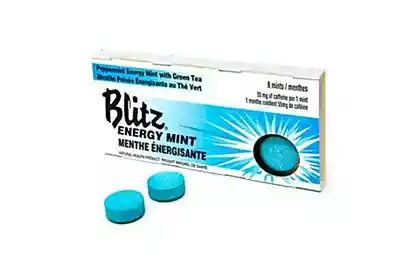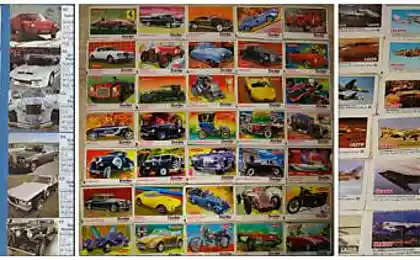171
Chewing gums of the USSR, which I would like to treat grandchildren
As you know, the Soviet Union was very good at rockets, and in the field of ballet we were ahead of the whole planet. But young people dreamed of jeans and gum, with which everything somehow did not go well. Soviet gum. What were they like? Why were they first banned and then suddenly allowed?
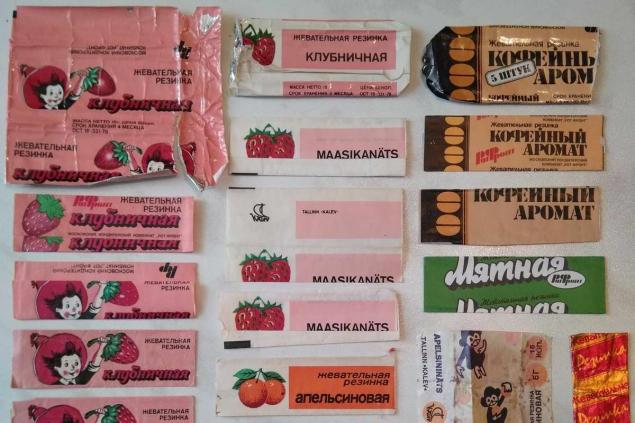
Because of the popularity in the West, gum was considered in the USSR a symbol of bourgeois decay. According to the party leadership, she did not fit into the image of the young builder of communism.
Teachers told students and schoolchildren that gum is very harmful to the stomach, contributes to moral degradation and can contain “contaminated blades” that the vile imperialists plant to harm Soviet youth.

Among children and adolescents, gum was the subject of a real cult. In addition to the pleasant taste, this was due to the presence inside of colorful inserts depicting comic book heroes, football players and luxury cars.
The tragedy in Sokolniki on March 10, 1975 in the Sokolniki Ice Palace a match of the USSR junior hockey team against Canadian peers took place. The Canadian team was sponsored by Wrigley, one of the largest manufacturers of chewing gum.
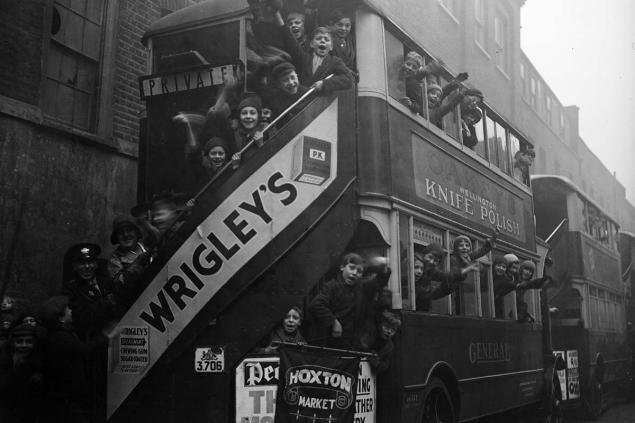
GettyImages After the competition, going down to the bus, guests began to scatter gum records around them. Apparently, this was stipulated by the advertising contract. By the way, at the baseball stadium “Wrigley Field” (Wrigley Field), named after the creator of the eponymous chewing gum, this practice exists to this day.
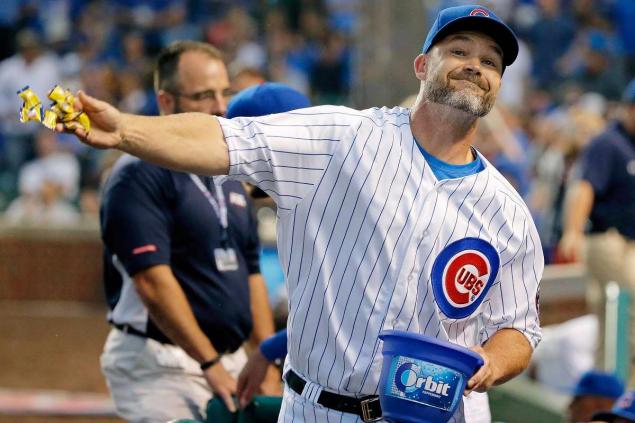
Unfortunately, the Canadians did not take into account the rabid demand for gum at that time in the USSR. Fans rushed to collect scarce goods. Maybe there were no casualties. But stadium officials feared the images would be leaked to Western media and ordered the metal gates leading to the street to be closed. As a result of the stampede, only according to official data, 21 people died.
Whether the tragic story in Sokolniki affected the party leadership or the approach of the Olympics-80, where they expected to visually show tourists all the advantages of the Soviet way of life, it is difficult to say for sure. But in the late 70s of the last century, the decision to allow the production of gum in the USSR was finally made.
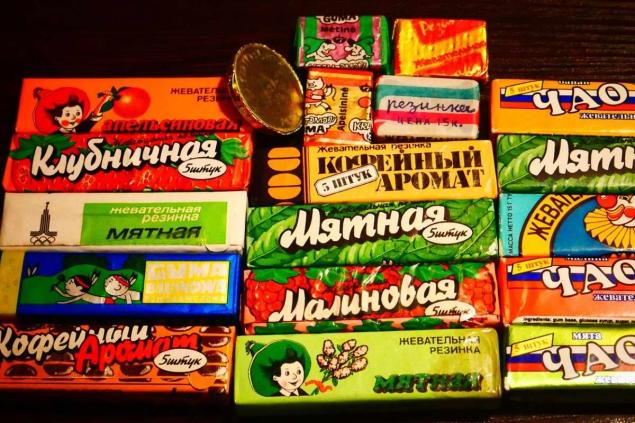
First, the lines in Yerevan and Rostov-on-Don were launched. A little later, the gum began to produce the Estonian factory "Kalev". And in the 80s, the Moscow factory Rot Front surprised customers with a whole constellation of tastes.
View this post on Instagram
Posted by Most Fashionable Clothing (@samayamodnaya72)
The shape of the product of Moscow cooks resembled the classic Wrigley. In a rectangular package there were five plates in a foil wrapper. The assortment of gum included 5 types: “mint”, “Orange”, “Strawberry”, “Raspberry” and “Coffee fragrance”.
The quality of Soviet gum was worse than Wrigley. It quickly lost its taste, hardly chewed, and the bubbles from it practically did not inflate. But for children it was still a magical delicacy, which also did not cost cheap (50 kopecks per pack).
Legendary gum of the 90s In the late 80s, the market began to get gum from Western manufacturers. Donald’s gum with comics about a Disney duckling on the liner cost (scary to say) 1 ruble!
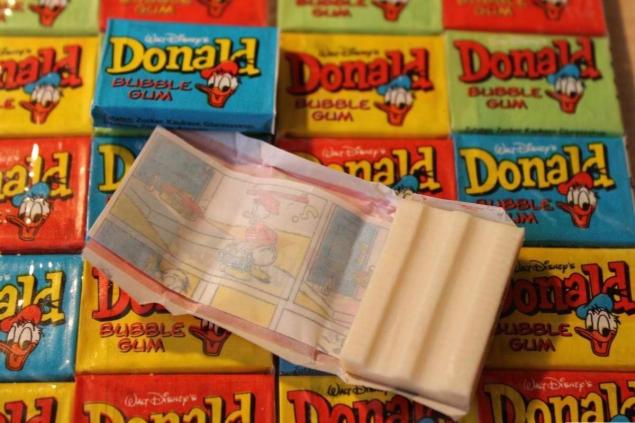
In the 90s, one of the most popular chewing gums in Russia was Turbo from the Turkish company Kent Gida.
View this post on Instagram
Posted by Ada Lee (@kidvalkirye)
Her inserts with photos of cars or motorcycles are still an object of lust for collectors.
Many people who grew up in the USSR remember the "delicious" of that period and desperately miss them even now, when there is complete abundance. Remember what my favorite childhood food was!
Today in every store you can buy gum for every taste and every wallet. But when I look at these simple treats from my childhood, I think back 40 years. And in the mouth there is a forgotten taste of coffee gum, the grayish plate of which my sister and I once divided into several parts to prolong the pleasure.

Because of the popularity in the West, gum was considered in the USSR a symbol of bourgeois decay. According to the party leadership, she did not fit into the image of the young builder of communism.
Teachers told students and schoolchildren that gum is very harmful to the stomach, contributes to moral degradation and can contain “contaminated blades” that the vile imperialists plant to harm Soviet youth.

Among children and adolescents, gum was the subject of a real cult. In addition to the pleasant taste, this was due to the presence inside of colorful inserts depicting comic book heroes, football players and luxury cars.
The tragedy in Sokolniki on March 10, 1975 in the Sokolniki Ice Palace a match of the USSR junior hockey team against Canadian peers took place. The Canadian team was sponsored by Wrigley, one of the largest manufacturers of chewing gum.

GettyImages After the competition, going down to the bus, guests began to scatter gum records around them. Apparently, this was stipulated by the advertising contract. By the way, at the baseball stadium “Wrigley Field” (Wrigley Field), named after the creator of the eponymous chewing gum, this practice exists to this day.

Unfortunately, the Canadians did not take into account the rabid demand for gum at that time in the USSR. Fans rushed to collect scarce goods. Maybe there were no casualties. But stadium officials feared the images would be leaked to Western media and ordered the metal gates leading to the street to be closed. As a result of the stampede, only according to official data, 21 people died.
Whether the tragic story in Sokolniki affected the party leadership or the approach of the Olympics-80, where they expected to visually show tourists all the advantages of the Soviet way of life, it is difficult to say for sure. But in the late 70s of the last century, the decision to allow the production of gum in the USSR was finally made.

First, the lines in Yerevan and Rostov-on-Don were launched. A little later, the gum began to produce the Estonian factory "Kalev". And in the 80s, the Moscow factory Rot Front surprised customers with a whole constellation of tastes.
View this post on Instagram
Posted by Most Fashionable Clothing (@samayamodnaya72)
The shape of the product of Moscow cooks resembled the classic Wrigley. In a rectangular package there were five plates in a foil wrapper. The assortment of gum included 5 types: “mint”, “Orange”, “Strawberry”, “Raspberry” and “Coffee fragrance”.
The quality of Soviet gum was worse than Wrigley. It quickly lost its taste, hardly chewed, and the bubbles from it practically did not inflate. But for children it was still a magical delicacy, which also did not cost cheap (50 kopecks per pack).
Legendary gum of the 90s In the late 80s, the market began to get gum from Western manufacturers. Donald’s gum with comics about a Disney duckling on the liner cost (scary to say) 1 ruble!

In the 90s, one of the most popular chewing gums in Russia was Turbo from the Turkish company Kent Gida.
View this post on Instagram
Posted by Ada Lee (@kidvalkirye)
Her inserts with photos of cars or motorcycles are still an object of lust for collectors.
Many people who grew up in the USSR remember the "delicious" of that period and desperately miss them even now, when there is complete abundance. Remember what my favorite childhood food was!
Today in every store you can buy gum for every taste and every wallet. But when I look at these simple treats from my childhood, I think back 40 years. And in the mouth there is a forgotten taste of coffee gum, the grayish plate of which my sister and I once divided into several parts to prolong the pleasure.
The fate of the children of Nikitin, who were sent to school at the age of five and endlessly tempered
Why Italians Don't Drink Tea and Are Surprised When Friends Drink Tea

